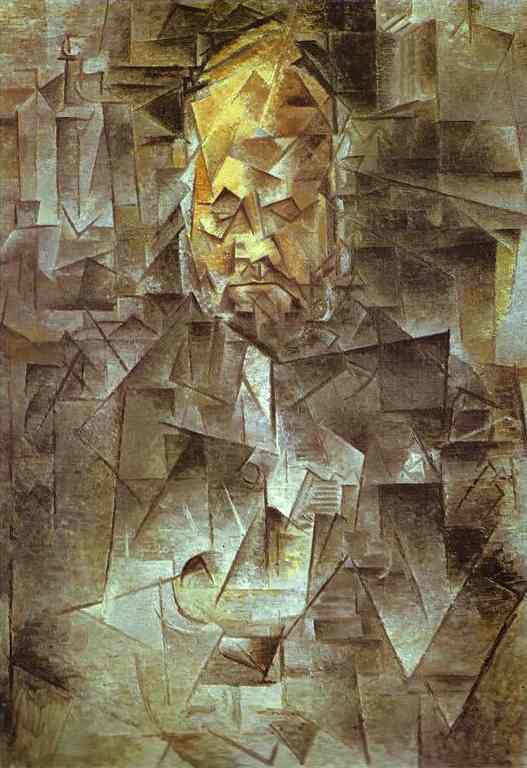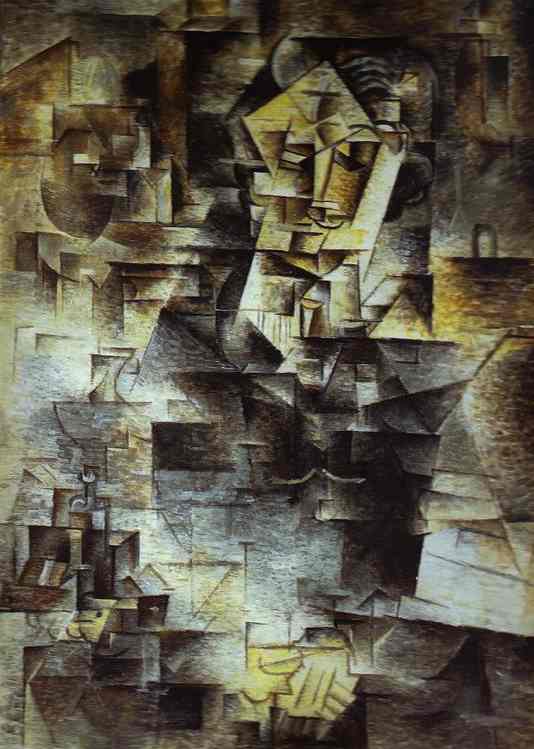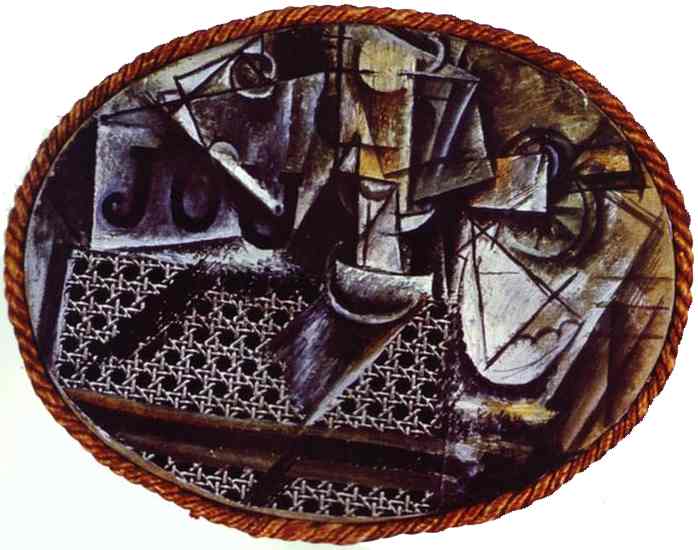
Nude Woman. 1910. Oil on canvas. The National Gallery of Art, Washington, DC, USA

Pablo Picasso - Analytical Cubism 1910
By 1910, Picasso and Braque had developed Cubism into an entirely new means of
pictorial expression. In the initial stage, known as Analytical Cubism, objects
were deconstructed into their components. In some cases, this was a means to
depict different viewpoints simultaneously; in other works, it was used more as
a method of visually laying out the FACTS of the object, rather than providing a
limited mimetic representation. The aim of Analytical Cubism was to produce a
conceptual image of an object, as opposed to a perceptual one.
At its height, Analytical Cubism reached levels of expression that threatened to
pass beyond the comprehension of the viewer. Staring into the abyss of
abstraction, Picasso blinked...and began to start putting the pieces of the
object back together.
Portrait of Ambroise Vollard. 1910. Oil on canvas. The Pushkin
Museum of Fine Art, Moscow, Russia

Nude Woman. 1910. Oil on canvas. The National Gallery of Art,
Washington, DC, USA

Portrait of Kahnweiler. 1910. Oil on canvas. Art Institute of Chicago, Chicago, IL, USA

Violin. 1912. Color paper. The Pushkin Museum of Fine Art, Moscow, Russia

Still-Life with Chair Caning. 1911/12. Collage of oil, oilcloth, and pasted paper simulating chair caning on canvas. Musée Picasso, Paris, France

Portrait of Wilhelm Uhde (1910)
Portrait of Ambroise Vollard (1910)
Accordionist (1911)
Wine Glass (1911)
"Ma Jolie" (Woman with a Zither or Guitar) (1911)